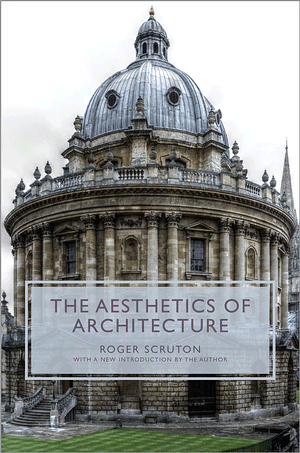 An academic review on first two chapters
An academic review on first two chapters
Roger Scruton’s aesthetics of architecture, a book written in 1979, is a philosophical exploration of aesthetics in architecture and in thereby architecture itself. The text starts with how philosophy, a field different from architecture and psychology, can help us understand aesthetics in most generic terms. To explore aesthetics, one must explore architecture itself first, for philosophy of architecture itself is in murky waters. The various theories of architecture, that is supposed to help us critically analyse the aesthetics, fail because they ignore some significant aspects of architecture. The book is as much as about architecture as it as much about aesthetics. The author thus tries to set architecture aside from arts using various unique features architecture has- function, localized value, feature of technique, public object. For each feature, the author explains what it means in other arts and how different it is in architecture with elaborate analogies and various reference to other writings on architecture. Architecture is thus established as a political art, in the way it responds to paradigm change unlike other arts do. Mr. Scruton then goes on to say that decorative arts is an important part of architecture and it is a vernacular. Architecture, thus, is part of everyday human activates. Now that the architecture is differentiated from other arts, one is left to contemplate how different it is from a building. Could aesthetics alone help define a building as architecture? ; Thus, placing aesthetics essentially in the centre of architecture. The author then states his real enquiry; the absence of aesthetical importance in today’s architecture.
According to Mr. Scruton, Architecture today has been turned into a problem solving exercise and aesthetics has become an accidental product of that exercise. Human needs and functions have been placed at the heart of architecture and defined as the guidelines that govern design. Aesthetics sometimes only come up as superficial rationalisation without adding any value to the building. He ends the argument by saying aesthetics should be reintroduced to the builder’s heart to recreate beautiful experience of architecture
While the book is an exploration of architecture, the real crux of the book lies in his criticism of modern architecture; an age where everything is dictated by needs and function, an architecture stripped of any additional ornamentation. Even though his previous arguments presents that any object has an aesthetic value of its own, he seems to neglect that argument while critiquing modern architecture. He only concentrates on the lost aesthetic values in the modern version, while it would have been nice to explore what other ways aesthetic values can be, even in these pure functionalist architecture. One may or may not agree with the criticism of modern architecture of Mr. Scruton’s, but the idea of architecture presented is ,crisp and clear, and is highly appreciated.
[ 464 words]